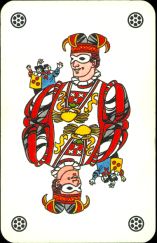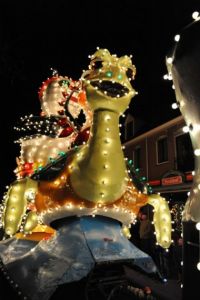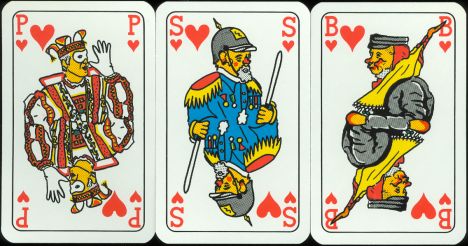3/3/2010
CARNAVAL
The origin of the feast is unknown. Presently there are two dominant assumptions going around. The first one explains the festival as derived from an ancient pagan fertility feast, celebrating the coming of spring, which was taken into the Christian liturgy. The second one believes that it was an educational initiative by the Roman Church to prepare people for the coming fasting period. Fact is that the name Carnival hasn't yet been found in any written sources before around 1000 AC, which would make the second explanation a more convincing one.
The origin of the name is disputed too. It's explained as deriving from the Latin "Carne Vale", which is best translated as "Farewell Meat", but another given explanation is that it's derived from the Latin "Carrus Navalis", literally a "ship's car", which was pulled around the village during the Shrove-tide, manned with disguised people.
Carnival is celebrated in different places all over the world. Most famous are those of Rio de Janeiro and Venice. But here in the "lowlands", Belgium and the Netherlands, carnival is celebrated, with parades, dressing up in costumes and of course lots of drinks and food too.
PLAYING CARDS ON PARADE..... |
Carnival is a Roman Catholic based festival. In the Netherlands there are Protestants and Roman Catholics and as a result of historic religious disputes the Roman Catholics mainly live south of the river Rhine in the provinces of North Brabant and Limburg and the Protestants north of that river. In the southern provinces every major town and lots of smaller ones all have their own carnival parade. People dress up for the parade and sometimes a family finds their inspiration in playing cards. Parade pictures by courtesy of Randolf de Jong |
|
 |
The "Prince Carnaval" is the most important person within the town or the Carnaval Club, over which he presides, during the Carnival period. He's addressed as "Highness" and leads his entourage, usually consisting of his adjutant and the Council of Eleven, during the festivities. |
|
|
The "Council of Eleven" is a society of 11 persons, who organize and accompany the festivities. The name refers to the number 11, the fool's number, which plays an important role in carnival here. On November 11th (11/11) the Council starts with the first preparations of the festivities. Jokers are from the North Brabant deck by Carta Mundi from 1992, designed by Han Janssen. |
|
Prince Albert I |
Lady Marga |
Farmer Falk |
|
|
||
|
Repeating designs of the courts in each suit of this beer advertising deck that was published by a German brewer. They show the leading figures of the 1993 Karneval in Cologne, Germany. Printed by the VASS. |
||
Of course the floats (carts, pulled by tractors here) will have to be build first and in several towns there are special "building clubs" that will exercise this task. Here below are the courts from a deck that was published in 1984 by such a club: the "building club" is called "De Watertore" (the Water Tower) and of course it wasn't published to celebrate their 10th anniversary, but their 11th. The deck has unusual indices: the King is represented by a Prince, the Queen by a Schout (bailliff) and the B probably stand for "Boer"(farmer). Each of the suits shows the same images on the courts.



Although we are living in the protestant part of the Netherlands and are not bothered by carnival here yet (but the festival is slowly spreading throughout the country), the festival is so widespread around the world that we wanted to give it a special place here too. And there's an open invitation for everyone, who has decks or single cards about the celebration of carnival in their country, to send images of the cards to us and we'll add them to this xpo.